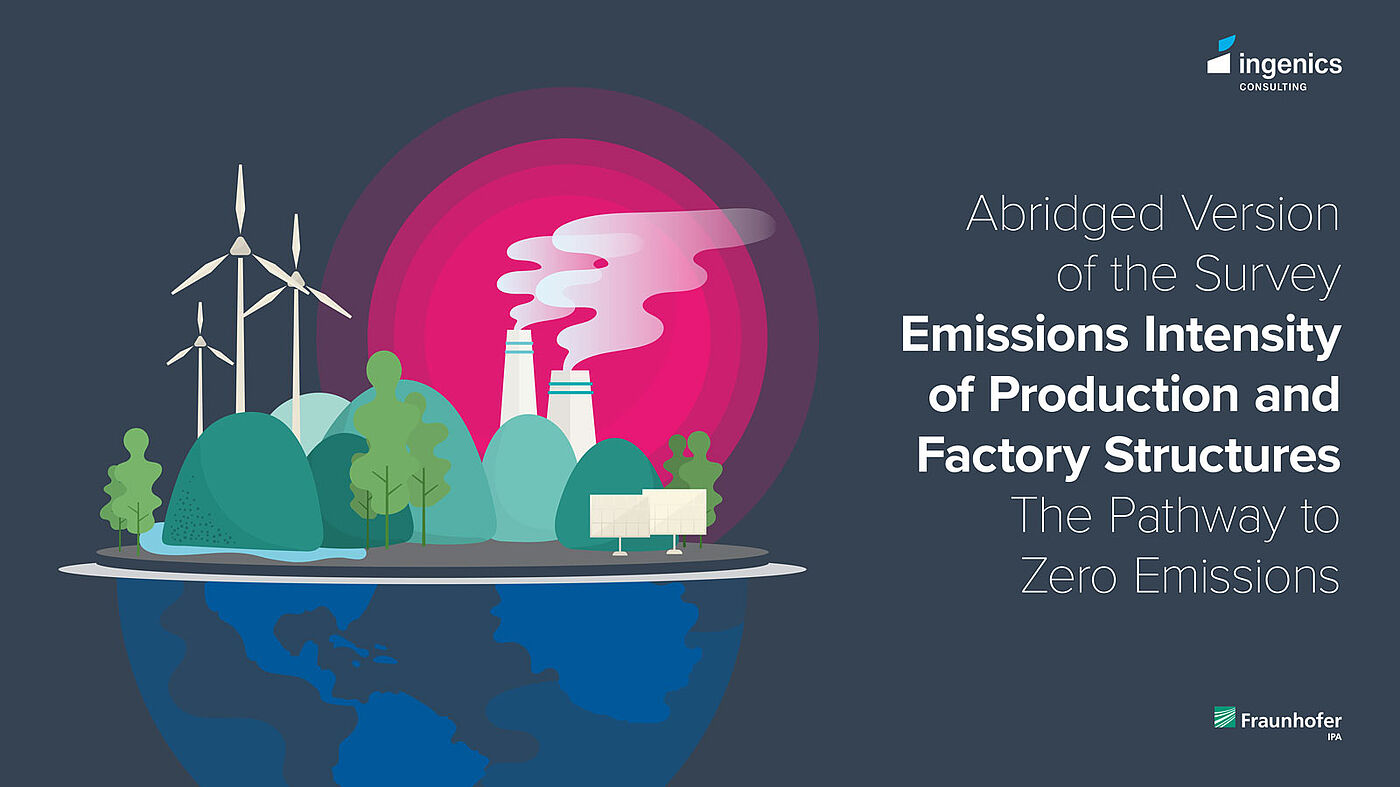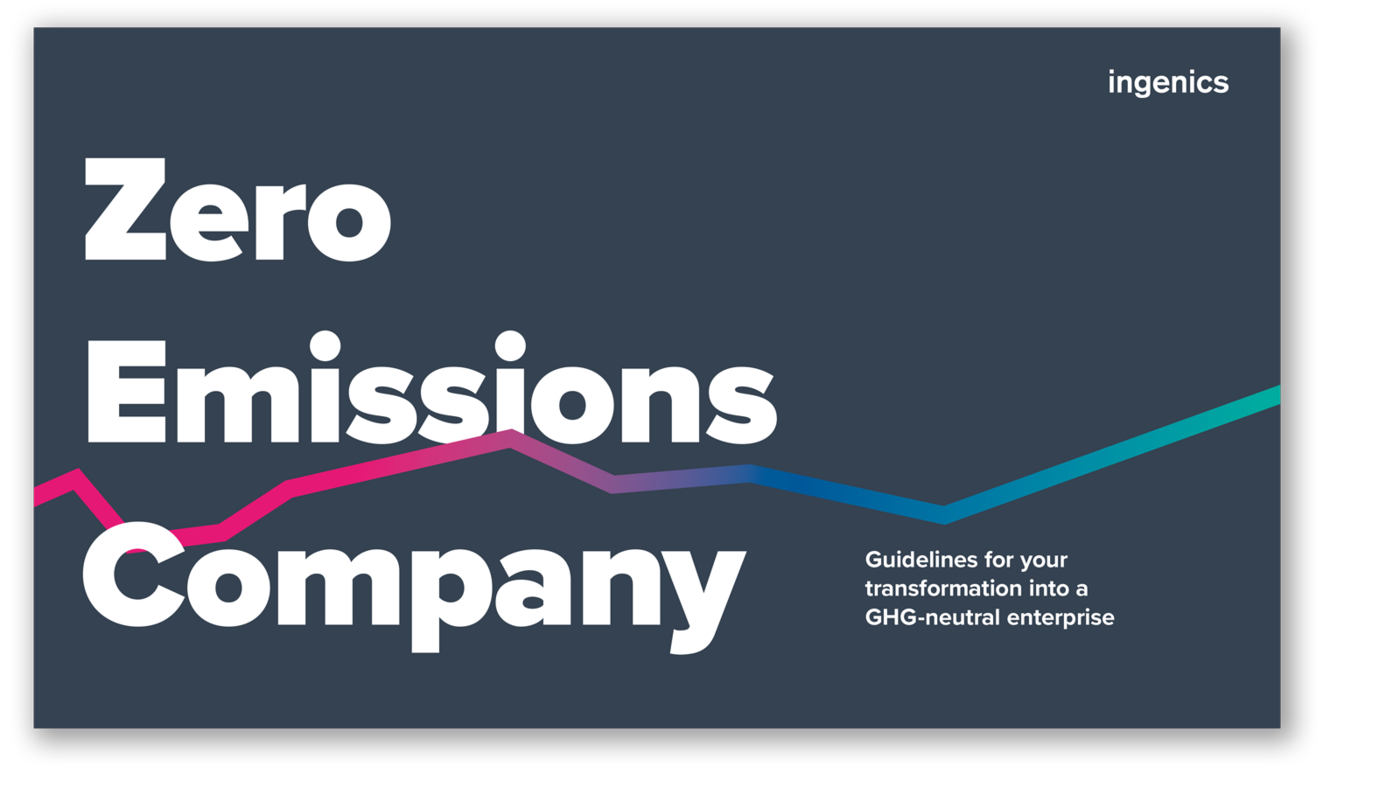Zero-Emissions Company
How you can guide your business toward decarbonization.
What is a Zero-Emissions Company?
A zero-emissions company is a company that produces net neutral greenhouse emissions overall when it does business. It has a neutral carbon footprint and does not make any contribution to man-made climate change. To achieve this goal, however, you need to consider not only carbon emissions, but also all other greenhouse-gas emissions.
Supply chains are located upstream of production. Their share in net greenhouse-gas emissions is increasing continuously, especially in the automotive industry. In contrast, the emissions that relate to a company’s factory and products are caused directly by the organization itself, e.g., from using its stationary and mobile equipment or chemical processes.
The journey to becoming a zero-emissions company is daunting for businesses. It involves three areas of action that are highly relevant for manufacturing industries:
- Green Supply Chain
- Green Factory
- Green Product
How Do Businesses in Manufacturing Develop a Sustainability Strategy?
The range of measures that are effective for decarbonization stretches across all these dimensions. There are no set rules about the solutions that suit a particular business. To find the ones for you, you need to analyze your status quo and, based on it, develop a sustainability strategy that fits the requirements of your organization.
These are some of the questions that might be relevant:
- What sustainability targets do you want to achieve? Which can you achieve?
- What form does your greenhouse-gas footprint take?
- What potential savings can be gained as a result?
- What are the decarbonization strategies and measures needed to use this potential?
- On the road map to zero emissions, how will the focus stay on your business case?
Challenges on the way to zero-emissions
Get initial insights into how companies are engaging with the Zero Emission Company and which contradictions still need to be resolved in the abridged version of our survey "Emissions Intensity of Production and Factory Structures – The Pathway to Zero Emissions”.

These Three Areas of Action in Industry Are Decisive for Your Zero-Emissions Company:

1. Green Supply Chain
Industrial products without global supply chains have become inconceivable. Freight makes a significant contribution to your global carbon footprint even if your supply chain already is efficient and has optimized timing. If your business wants to achieve its sustainability and decarbonization goals, it will need to analyze its entire supply chain.
There are two things that a sustainable supply chain has to focus on. The first is analyzing the cargo routes in the supply chain. The second is analyzing the greenhouse-gas footprint from the manufacturing (and therefore also the design and engineering principles) of the components that are relevant to your production.
If businesses want to achieve their goal of being a zero-emissions company, they have to efficiently manage the optimization of their purchased parts’ greenhouse-gas emissions. This is the foundation for advantages in the market and among competitors.
Success factors for a sustainable supply chain:
- Sustainable engineering: optimized design for less greenhouse gases
- Cleanly produced: the greenhouse-gas footprint of purchased parts
- Sustainable cargo routes: reduced greenhouse gases in the supply chain
- Fair working conditions: Germany’s Supply Chain Due-Diligence Act
2. Green Factory

A greenhouse-gas-neutral production site – or a “green factory” – combines environmentally beneficial processes and the latest technologies with the working world of the future. A green factory is characterized by things including highly efficient use of resources and energy and an adaptable design which lets it remain transformable and future-proof across its entire life cycle.
The factory as well as the ongoing production need to be integrated into the sustainable, circular economy of material and energy flows. “Lean” and “digital” are the key requirements for the transparency that is demanded, including when it comes to energy management and intelligent control over flexibility in production and energy.
3. Green Products
In 2023, Earth Overshoot Day will fall on 27 July. This is the day when humanity will have used up all the natural resources the planet can regenerate in one year. It highlights the importance of new resource use strategies in the transition to a zero-emissions society. This includes, in particular, reducing greenhouse gas emissions from products.
The input relevant for this analysis includes the usage as well as disposal or reuse of a product. Responsible manufacturers incorporate these aspects into their sustainability strategy and develop their business model into a circular economy with greenhouse-gas-neutral production.
The goal of a circular economy is to detach economic activities from the consumption of materials and energy. Doing this develops closed cycles that minimize or prevent waste and obtain as much use as possible from the resources that are consumed. Establishing a strategic position on these issues is a major opportunity for any company, although it is also a challenge.
Success factors for greenhouse-gas-neutral products:
- Greenhouse-gas-neutral usage: green products with a carbon footprint that is as small as possible
- Reduce, reuse, recycle: climate-neutral production represents a sustainable, circular economy

Guidelines for Your Business
Zero Emissions: guidelines for your transformation into a greenhouse-gas-neutral enterprise
Being a zero-emissions company requires a comprehensive perspective, from calculating emissions to building a green factory and sustainable supply chains as well as manufacturing green products. Our Zero Emissions guidelines offer you a compilation of many tips and problem-solving approaches for these issues. Take the first step toward your transformation into a greenhouse-gas-neutral company!
Becoming a Zero-Emissions Company with Ingenics
Consulting services for decarbonization
The journey to becoming a zero-emissions company has many milestones which can be hard to reach without prior experience. Our consultants help you to champion this transformation. Using an analysis of your status quo, we put together a complete package of measures that suits your individual requirements, for example, for existing factories (green brownfield projects) as well as for new sites (green greenfield projects).
We provide a full suite of services, with consulting and realization combined. If necessary, we also include our partners’ expertise in specialized topics and coordinate the integration of all work streams until you achieve your vision of a zero-emissions company.
Frequently Asked Questions about Zero Emissions
What Is a Greenhouse-Gas-Neutral Company?
A company is greenhouse-gas-neutral when its net greenhouse-gas emissions are reduced to zero or are fully offset. The goal of being a zero-emissions company is to reduce carbon and other greenhouse-gas emissions. It will have a sustainability strategy based on three pillars: a green supply chain, a green factory, and green products.
What Does Zero Emissions Mean?
Zero emissions means achieving a net zero result when weighing up emissions generated and emissions removed from the atmosphere. Zero emissions also means budgeting for natural greenhouse gases. It involves taking actions to remove the greenhouse-gas emissions produced by humans from the atmosphere. Once natural emissions have been subtracted, the result is net zero emissions – which stabilizes global warming.
What Is Decarbonization?
Decarbonization refers to a green transformation into a greenhouse-gas-neutral company and way of doing business. The important tools for this are establishing greenhouse-gas emissions that are as low as possible, implementing a sustainable, circular economy, and making production climate-neutral.
What Does Greenhouse-Gas-Neutral Production Mean?
Greenhouse-gas-neutral production means manufacturing in a climate-friendly way with an aim of net zero emissions. It has a sustainable circular economy as its basis and is embedded into the overall strategy of a zero-emissions company.
Climate-Neutral, CO2(e)-Neutral, Greenhouse-Gas-Neutral – What Do They All Mean?
Any business working on its sustainability is going to quickly come across key terms like “climate-neutral,” “carbon-neutral,” “greenhouse-gas-neutral,” or even “CO2e-neutral.” Sometimes they are used synonymously, but don’t be confused: The one that is relevant to a zero-emissions company is greenhouse-gas neutrality, which is because the term includes all greenhouse gases that contribute to global warming. A closely related term is CO2e neutrality, which refers to CO2 equivalent, a recognized unit of measurement. On the other hand, designations such as “climate-neutral” and “carbon-neutral” are not precise enough, especially as the latter concentrates solely on net carbon-dioxide emissions.